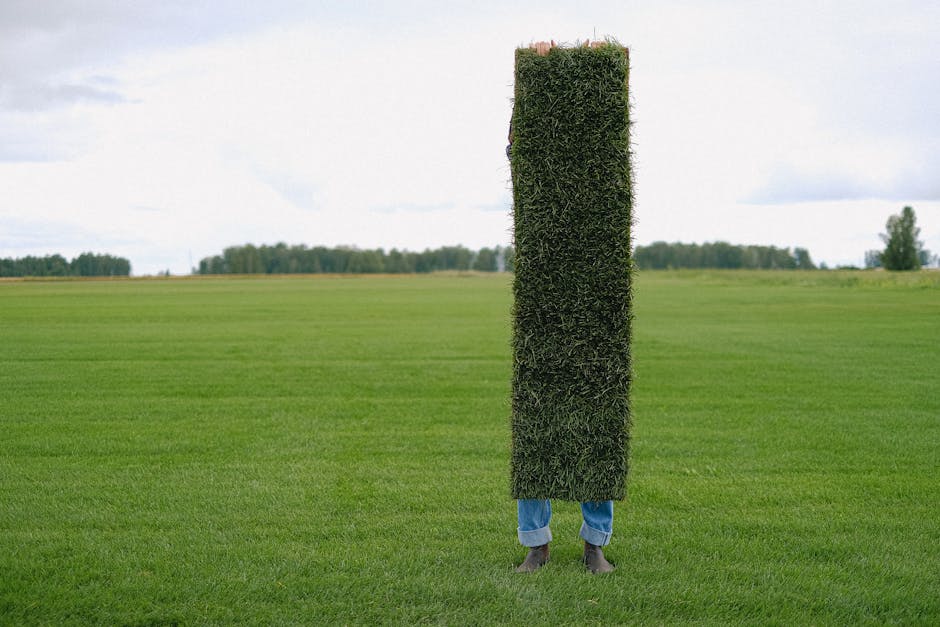Common weeds that grow on artificial grass
Weeds can still pop up on artificial grass, but most are common lawn weeds like dandelions, clover, and crabgrass. These invaders can disrupt the flawless look of your synthetic turf. It’s important to identify and remove these weeds promptly to keep your artificial lawn beautiful and weed-free.
How to identify different types of weeds
Look for grassy weeds that resemble regular grass but grow taller and faster. Broadleaf weeds have wide leaves and can be easily spotted among the grass. Sedge weeds look like grass but have triangular stems. Clover weeds have small leaflets grouped in threes. Lastly, vining weeds wrap around the grass and choke it out.
Issues caused by weeds on artificial grass
Weeds on artificial grass can quickly ruin the appearance of your lawn. They can be persistent and difficult to control, spreading rapidly if not addressed promptly. Weeds not only detract from the aesthetics of your artificial grass but can also cause damage over time. Regular maintenance and proactive weed prevention are key to keeping your artificial grass looking pristine.
Preventative measures to stop weeds from growing
The best way to prevent weeds from growing on your artificial grass is to install a weed barrier underneath the turf. This barrier stops weed seeds from reaching the soil and germinating. Additionally, regularly sweeping the turf to remove any debris that can harbor weed seeds can help maintain a weed-free artificial lawn.
Natural methods to remove weeds
To get rid of weeds on artificial grass naturally, you can use vinegar or boiling water to kill them. Another method is to pull them out manually, making sure to remove the roots. Applying a weed barrier fabric under the artificial grass can also help prevent weeds from growing through.
Chemical treatments for weed control
Chemical treatments are often used to control weeds on artificial grass. These treatments are designed to target weeds specifically, without harming the artificial grass itself. Herbicides are commonly used for this purpose. They work by either killing the weeds on contact or preventing their growth. Selective herbicides target specific types of weeds, while non-selective herbicides can kill any plant they come into contact with. It’s important to carefully follow the instructions when using these treatments to ensure effective weed control without damaging the artificial grass.
DIY weed removal techniques
To keep weeds away from your artificial grass, you can follow some simple DIY techniques. Here are some methods you can try:
- Regularly removing any debris such as leaves or twigs from your artificial grass can prevent weeds from taking root.
- Using a weed killer specifically designed for synthetic turf can help eliminate any weeds that manage to grow.
- Applying a weed barrier underneath your artificial grass during installation can also help prevent weed growth.
By incorporating these tips into your lawn maintenance routine, you can keep your artificial grass weed-free and looking its best.
Professional weed removal services
Professional weed removal services are essential for keeping your artificial grass area looking pristine. Weeds can pop up between the synthetic grass blades, ruining the aesthetic appeal of your lawn. Hiring professionals for weed removal ensures a thorough job, eliminating all unwanted plant growth without damaging the artificial turf. These experts use specialized tools and techniques to target the weeds at their roots, preventing them from regrowing. By investing in professional weed removal services, you can maintain a flawless artificial grass surface that enhances the beauty of your outdoor space.
Importance of regular maintenance for artificial grass
Keeping your artificial grass free from weeds doesn’t mean it’s maintenance-free. Regular maintenance is crucial to prevent weeds from invading your pristine artificial turf. Without proper care, weeds can gradually find their way through the grass, disrupting its flawless appearance. Regular maintenance tasks for artificial grass include:
- Sweeping and raking to remove debris that can shelter weed seeds.
- Applying weed killers specifically designed for artificial grass.
- Regular brushing to keep the blades upright and prevent weed growth in between.
- Inspecting for any signs of weed growth early on to address the issue promptly.
By investing time in maintaining your artificial grass, you can enjoy a weed-free and beautiful outdoor space all year round.
Maintaining a weed-free artificial grass landscape
To keep your artificial grass looking pristine, it’s crucial to prevent weeds from taking root. Here are some tips to maintain a weed-free artificial grass landscape:
- Regularly inspect your artificial grass for any signs of weeds poking through.
- Pull out any weeds that you spot immediately to prevent them from spreading.
- Use a weed barrier or a geotextile fabric underneath the artificial grass to inhibit weed growth.
- Apply a pet-safe weed killer on any persistent weeds that appear.
- Consider using artificial grass infill with antimicrobial properties that can help inhibit weed growth.




